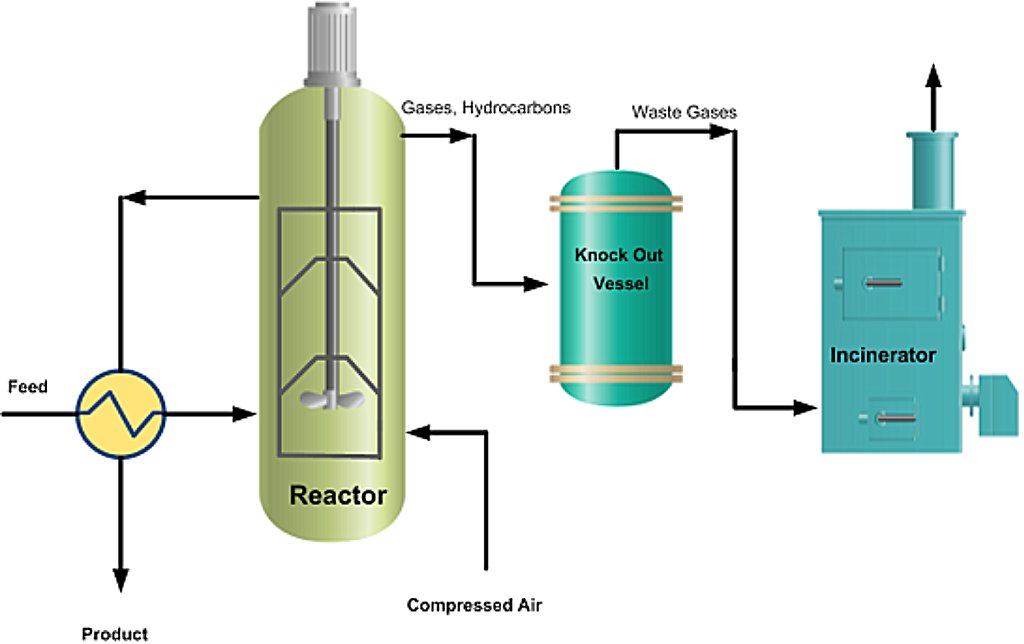The physical properties of asphalts may further be modified by 'air blowing'. This is an oxidation process which involves the blowing of air through the asphalts, either on a batch or a continuous basis, with the short residue at a temperature of 240°C to 320°C.
Description of the continuous blowing process
After preheating, the short residue is introduced into the blowing column just below the normal liquid level. Air is blown through the bitumen by means of an air distributor located at the bottom of the column. The air is not only the reactant but also serves to agitate and mix the bitumen, thereby increasing the surface area and rate of reaction. Oxygen is consumed by the bitumen as the air ascends through the material. Steam and water are sprayed into the vapour space above the bitumen level, the former to suppress foaming and dilate the oxygen content of waste gases and the latter cools the vapours to prevent after-burning. The "blown" product flows from the bottom of the blowing column into a surge drum via an external draw-off line. In this way the minimum level of product in the blowing column is controlled. From the surge drum the blown product is passed through heat exchangers to achieve the desired "rundown" temperatures and to provide an economical means of preheating the short residue, before pumping the product to storage.
The penetration and softening point of the blown bitumen are affected by:
- the viscosity of the feedstock
- the temperature in the blowing column
- the residence time in the blowing column
- the origin of the crude oil used to manufacture the feedstock
- the air-to-feed ratio
The blowing process dehydrogenates the short residue, resulting in oxidation and polycondensation, increasing the overall molecular size of the asphaltenes already present in the Feed and forming additional asphaltenes from the maltene phase. The reaction is exothermic. Therefore close temperature control of this process is required, which is achieved by regulating the air-to-short residue ratio in the blowing column.
The chemistry of the blowing process
The aim of the blowing process is the formation of asphaltenes. Three phenomena can be identified:
- Reactions during which the size of the molecules increases; formation of esters is particularly important; they not only account for about 60% of the oxygen in blown bitumen but also link up two different molecules and thus contribute to the formation of material of higher molecular weight; this mechanism results in an increase in the asphaltene content and a change in the colloid-chemical constitution and rheological properties of the bitumen
- Reactions during which the size of the molecule is unchanged; formation of cyclic hydrocarbons by means of dehydrogenation with H2O as a side product
- Reactions during which the size of the molecule decreases; separation of side branches from the molecules with blown distillate produced as a side product.
Source: E-ASPHALT, Asphalt Air Blowing Process.











